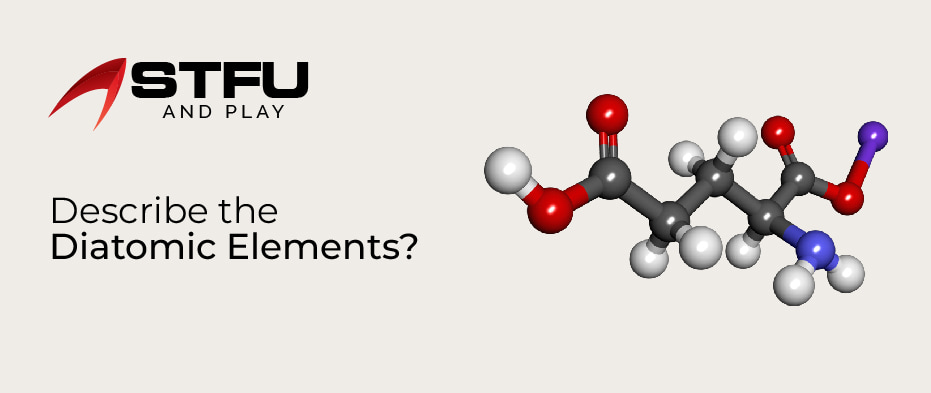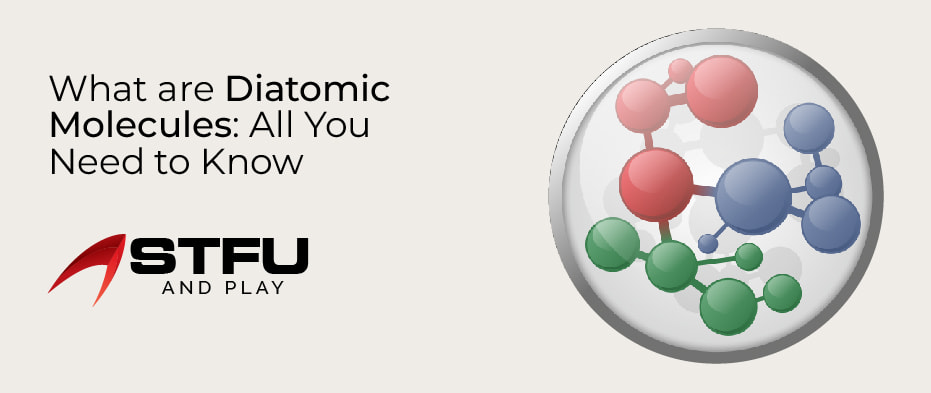Simply put, diatomic molecules have been formed of two atoms, either of the same or different chemical elements. Consider the diatomic molecule is made up of two atoms of the exact element origin, like Hydrogen and Oxygen. It would then be called homonuclear. However, the diatomic molecule in the said bond is non-polar.
The periodic table is listed on the standard laboratory conditions where elements are placed into homonuclear diatomic molecules. Moreover, gases like hydrogen, chlorine, nitrogen, and oxygen are chemical elements comprised of stable homonuclear diatomic molecules set on the STP or standard temperature and pressure.
There are also several noble gases like neon, krypton, xenon, to name a few, which are at STP, but at the same time are monatomic. Noble gases and homonuclear diatomic are called ‘element or molecular gases.’ These terms are used to distinguish from other gases that also have chemical compounds.
To slightly shoot up the temperature will also shape the other diatomic gases such as the halogens bromine and iodine. Additionally, all halogens are considered as diatomic molecules, except for Astatine.
What are the 8 Elements of Diatomic Molecules?
Eight elements are known to be diatomic molecules. They are:
- Nitrogen
- Fluorine
- Bromine
- Hydrogen
- Iodine
- Oxygen
- Chlorine
Put Out the 7 Different Types of Diatomic Elements?
Consider any diatomic molecules comprised of atoms from any two different elements. Therefore, it should be called a heteronuclear diatomic molecule. Seven elements naturally fall in the category of homonuclear diatomic when in their gases characteristics states. They are:
- Fluorine
- Bromine
- Chlorine
- Hydrogen
- Iodine
- Nitrogen
Each element is a nonmetal, given that halogens are a specific nonmetallic element. Nonetheless, Bromine is unique in this case; it is liquid on par the room temperature; however, the other elements are entirely all gases. As soon as the temperature dips or pressure spiked, these different elements turn into diatomic liquids.
Nevertheless, Astatine with the atomic number of 85 and Tennessine with the atomic number 117 are presented in the halogen group, not to mention the possibility of them forming the diatomic molecules. But there is a disagreement in the circles of scientists who opined Tennessine has the characteristics more inclined to the noble gas.
Describe the Diatomic Elements?

The said element is crucially significant in the 19th century in clearly explaining the near-complex concepts of element, atom, and molecule. A few of the most common elements are diatomic molecules such as hydrogen, oxygen, and nitrogen. The accredited atomic hypothesis of John Dalton considered each element as monoatomic. Apart from that, the atoms in the element match the same atomic number compared to the other. For example, the scientist considered the standard formula of the water as HO. While oxygen is approximately is eight times heavier than hydrogen on par the atomic weight. This gives birth to the confusion between the atomic weight and molecular formulas that persists for around half a century.
In 1805, the French chemist Gay-Lussac experimented with concluding that water comprises a single volume of oxygen and a pair of hydrogen. Six years later, in 1811, Amedeo Avogadro had cracked the correct proper settings of the water composition, which was later called Avogadro Law. But these findings were mostly, not wholly; were ignored for decades due to two contributing factors.
One is the widespread belief that the zero-chemical affinity between the atoms of the same element. The second is because of seemingly exceptions related to Avogadro’s law that were not adequately explained when it comes to dissociating molecules,
In 1860, the summit on the atomic weights called Karlsruhe Congress, where scientist Cannizzaro gave impetus to the theories of Avogadro and later utilized them to put up the table of atomic weights, which is universally accepted in the scientific circles.

